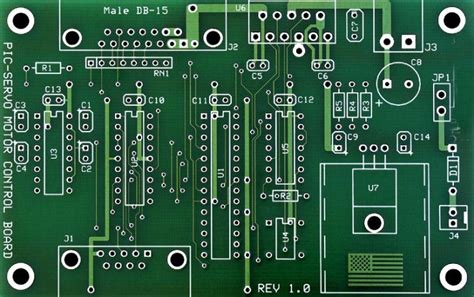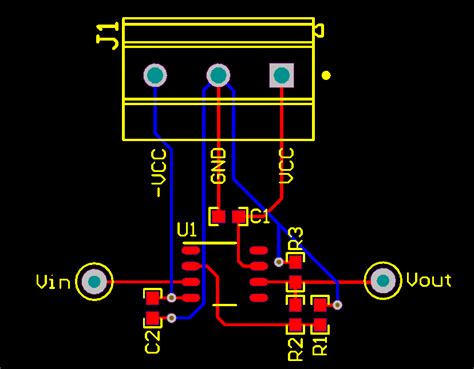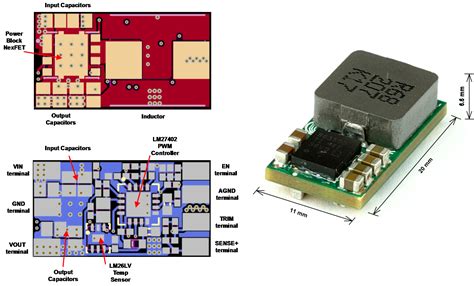Introduction to PCB Layout
Printed Circuit Board (PCB) layout is a crucial step in the design and manufacturing of electronic devices. It involves the arrangement of components and the routing of electrical connections on a board to ensure proper functionality, signal integrity, and manufacturability. Estimating the time required for PCB layout is essential for project planning, resource allocation, and meeting deadlines.
Factors Affecting PCB Layout Time
Several factors influence the time required for PCB layout, including:
- Board size and complexity
- Number of layers
- Component density
- Design constraints and requirements
- Designer’s experience and skill level
PCB Layout Time Estimation Techniques
There are various techniques used to estimate PCB layout time, ranging from simple rule-of-thumb methods to more advanced algorithmic approaches.
Rule-of-Thumb Methods
Rule-of-thumb methods are quick and easy ways to estimate PCB layout time based on general guidelines and past experience. Some common rule-of-thumb methods include:
-
Component Count Method: Estimate the layout time based on the number of components on the board. A rough guideline is 1-2 hours per 100 components.
-
Board Area Method: Estimate the layout time based on the board area. A rough guideline is 1-2 hours per square inch of board area.
-
Layer Count Method: Estimate the layout time based on the number of layers in the PCB. A rough guideline is 2-4 hours per layer.
While these methods provide a quick estimate, they may not account for the specific complexities and requirements of a given PCB design.
Algorithmic Methods
Algorithmic methods use mathematical models and algorithms to estimate PCB layout time based on various design parameters. These methods tend to be more accurate than rule-of-thumb methods but require more data and computational resources.
-
Parametric Models: Parametric models estimate layout time using a set of design parameters, such as board size, number of layers, component density, and routing complexity. These models are typically developed using regression analysis on historical PCB layout data.
-
Neural Networks: Neural networks are machine learning models that can learn from historical PCB layout data and make predictions based on input design parameters. They can capture complex relationships between design parameters and layout time, leading to more accurate estimates.
-
Expert Systems: Expert systems are knowledge-based systems that capture the expertise of experienced PCB Layout Designers in the form of rules and heuristics. They can provide layout time estimates based on the application of these rules to a given PCB design.

PCB Layout Time Estimation Tools
There are several software tools available that can assist in PCB layout time estimation. These tools typically incorporate one or more of the estimation techniques discussed above.
| Tool Name | Estimation Method | Key Features |
|---|---|---|
| PCB Time Estimator | Rule-of-thumb | Quick estimates based on component count, board area, and layer count |
| PCB Layout Estimator Pro | Parametric models | Detailed estimates based on design parameters, historical data analysis |
| NeuroLayout | Neural networks | Machine learning-based estimates, adapts to new data |
| Expert PCB Estimator | Expert systems | Knowledge-based estimates, customizable rule sets |
These tools can provide valuable insights into PCB layout time estimation, but it’s important to remember that they are still estimates and may not perfectly capture all the nuances of a specific PCB design.

Best Practices for PCB Layout Time Estimation
To improve the accuracy and reliability of PCB layout time estimates, consider the following best practices:
-
Collect and analyze historical data: Maintain a database of past PCB layout projects, including design parameters and actual layout times. Use this data to refine estimation models and techniques.
-
Break down the layout process: Divide the PCB layout process into smaller, manageable tasks, such as component placement, power routing, signal routing, and design rule checks. Estimate the time required for each task separately and sum them up for the total layout time estimate.
-
Account for design complexities: Consider the specific requirements and constraints of each PCB design, such as high-speed signals, dense component placement, or unique form factors. Factor these complexities into the time estimation process.
-
Involve experienced layout designers: Engage experienced PCB layout designers in the estimation process. Their insights and expertise can help identify potential challenges and provide more accurate time estimates.
-
Use multiple estimation methods: Employ a combination of rule-of-thumb and algorithmic methods to estimate PCB layout time. Compare and contrast the results from different methods to arrive at a more reliable estimate.
-
Allow for contingencies: Include a buffer in the estimated layout time to account for unexpected challenges, design changes, or other contingencies. A typical contingency buffer is 10-20% of the estimated layout time.

Conclusion
Estimating PCB layout time is a critical aspect of electronic product development. It helps project managers and design teams plan resources, set realistic deadlines, and ensure smooth project execution. By understanding the factors affecting layout time, employing appropriate estimation techniques, and following best practices, designers can generate more accurate and reliable PCB layout time estimates.
Frequently Asked Questions (FAQ)
-
Q: What is the most accurate method for estimating PCB layout time?
A: The most accurate method for estimating PCB layout time depends on the specific design and available data. Algorithmic methods, such as parametric models and neural networks, tend to provide more accurate estimates than rule-of-thumb methods, but they require historical data and computational resources. -
Q: How can I improve the accuracy of my PCB layout time estimates?
A: To improve the accuracy of PCB layout time estimates, collect and analyze historical data from past projects, break down the layout process into smaller tasks, account for design complexities, involve experienced layout designers, use multiple estimation methods, and allow for contingencies. -
Q: What should I do if my PCB layout time estimate turns out to be inaccurate?
A: If your PCB layout time estimate proves to be inaccurate, analyze the reasons for the discrepancy. Was the design more complex than anticipated? Were there unexpected challenges or changes? Use this information to refine your estimation methods and models for future projects. -
Q: How much buffer time should I include in my PCB layout time estimate?
A: A typical contingency buffer for PCB layout time estimates is 10-20% of the estimated layout time. However, the exact buffer time may vary depending on the complexity and uncertainty of the project. -
Q: Can I use PCB layout time estimation tools for any type of PCB design?
A: PCB layout time estimation tools can be used for a wide range of PCB designs, but their accuracy may vary depending on the specific design requirements and constraints. It’s important to choose a tool that aligns with your design needs and to use it in conjunction with other estimation methods and best practices.

No responses yet